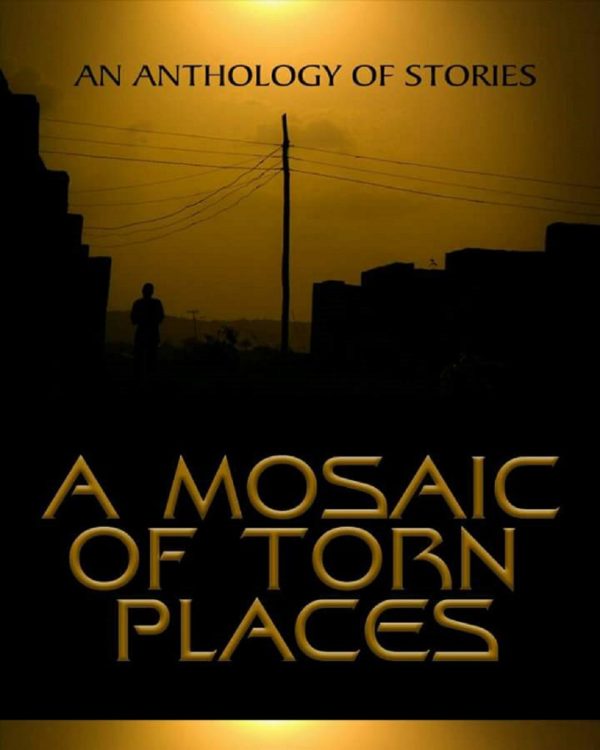
A Mosaic of Torn Places, the latest anthology of young writers out of Nigeria, collects ten stories of poignant diversity. In one of the anthology’s highlights, a Milton-loving seafarer embarks on a journey home only, after what seems a harmless indulgence with a stranger’s baby, to meet his end in mob justice. In another, a widower is desperate to connect with his young son. A military man mourns the death of his colleague and friend. And we are treated to a murder-in-the-church suspense in which a son discovers his father’s unlikely killer.
We meet a young woman defined by her relationship with her grandfather. A young man who is somehow led to believe in a total stranger. A writer wrangling with his wife. A cheating husband whose marriage proposal is ridiculed by his mistress. A man whose fiancee is in an affair with his client. And, in the anthology’s closest thing to a psychological thriller, a girl who gets pregnant in the barracks and endures hallucinations.
While the collection is unthemed, the stories by the ten writers—Munachim Amah, Dhee Sylvester, Emitomo Tobi Nimisire, Faderera Olaretan, Adams Adeosun, Dami Lare, Joe Aito, Ife Olujuyigbe, Caleb Somtochukwu Okereke and Collins Prime—are strung together by loss.
Compiled by Emitomo Tobi Nimisire and edited by Dami Lare, the anthology is introduced by Immanuel James, author of the ANA Prize-winning Under Bridge, whose fiction we have published. Its cover photo is by Adedayo Adeyemi Agarau and the cover design by Dhee Sylvester. In an email to Brittle Paper, their managing editor Adams Adeosun stated that the project was “set in motion in the first half of 2016.”
Here is the foreword by the compiler, Emitomo Tobi Nimisire.
*
During one of my first classes in secondary school, my mathematics teacher explained the Tally system to a class of kids who would rather be at the food stand. I sat, side pressed against the unpainted wall, taking in every word. A door was suddenly visible, open before me. I walked into the B.C.
I saw the early men. Saw them weary, bent. Saw them struggle to keep record, count. I saw them make notches on sticks: I, II, III, IV.
As much as these predecessors used the Tally for arithmetic, they were marks indeed; marks that have survived countless tsunamis, hurricanes, and two world wars. Marks that have lived through centuries to be doled out to generations on charcoaled walls, white boards; steamed and spiced in the mouths of mathematicians that tell the story of men who didn’t know that they were making history. Men who have no say in how their story is being told.
Our stories are being told: By two lovers in a room, her head on his chest, exchanging laughter and stories. By angry mothers to nonconforming children, spinning tales into a moral compass. By men who have chosen the path of letters. The ones we call writers.
A writer tells a story – fiction or not – through certain vessels – characters. In his stories, you will find particles of the writer sandwiched between lines, scattered amidst paragraphs; just as the early men pervade the Tally.
I wonder if my mathematics teacher knew that in those moments when he stood before the class and genuflected, he was a storyteller.
Emitomo Tobi Nimisire, 2017.
Congratulations to the team and writers.
DOWNLOAD: A Mosaic of Torn Places – An Anthology of Stories.









A MOSAIC OF TORN PLACES : A REVIEW – The Odd Son August 10, 2017 08:27
[…] loss of a sanity, love, mother, friends, wife, hope. The pdf. of the anthology is free for download here.Below are a summary of these stories and my […]